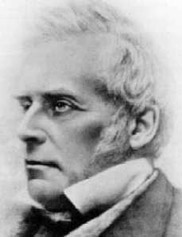tumblog summary
I began my tumblog without a clear notion of what I was doing. I had an idea that this was a good thing–that the value would emerge as I dived in and just started posting. I don’t think this would have occurred to me had I not been primed by IDEL, although the tumblog was quite different than the blog for that module.
In the first few weeks I took my cues from the module resources, other students’ tumblogs and the comments I received. It became increasingly apparent, especially in the early stages, that I was constantly having to leap the fences that my mind had put up. The fences were sometimes trying to keep popular culture out, or block ideas that seemed too tenuously connected to the module topics, or concerns that my tumblog would pick up the spill over from my work and personal lives. But the leaping itself, once I’d realised that it was okay for me to do, engendered a sense of freedom that had been lacking in many academic contexts up to this point. (I especially think of a paper I wrote for an undergraduate course in which I combined learning from another module, from a different department, with learning from the one I was studying, and received a failing mark for being ‘off-topic’; this seriously put me off combining different disciplines in assessed work.) The encouragement to actively pursue interdisciplinary connections, the delight of combining unexpected and diverse content and media, and the challenge to use the academic reading and theory to gain insight into the culture represented was thus a rare intellectually fulfilling process.
It was only near the end of the module, however, that I began to see how closely the tumblog itself related to the module topics. I don’t know if I can quite map the blocks onto the progress of my understanding of the tumblog experience, but perhaps I could suggest that the first block gave us (as a module group) a way into examining and extending our shared understanding of digital cultures and the portrayal of the digital in our cultures (including self-referential reflection on the nature of online environments and individual relations to that environment and identity–which spoke directly to our participation on edc13.education.ed.ac.uk); this collective endeavour developed a community with its own norms and behaviours (again, a playing out of the theory); and finally this ‘environment’ became an amalgam of artefacts, people and ideas around a ‘matter of concern’–cyborg posthumans experimenting.
I also think this module has avoided the error of creating a ‘fake’ journey of discovery in which the student is scheduled to experience cognitive dissonance on day X, a paradigm shift on day Y and finally a learn-by-doing epiphany on day Z. Perhaps most of my fellow students linked the tumblog to module content long before I did; but the crucial thing as I see it was that the tumblog and projects made this delivery of the module significantly and genuinely unique, and as such a real-time enactment of the theory.









Recent Comments